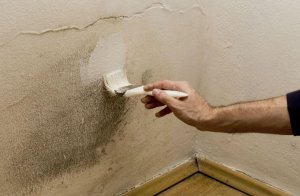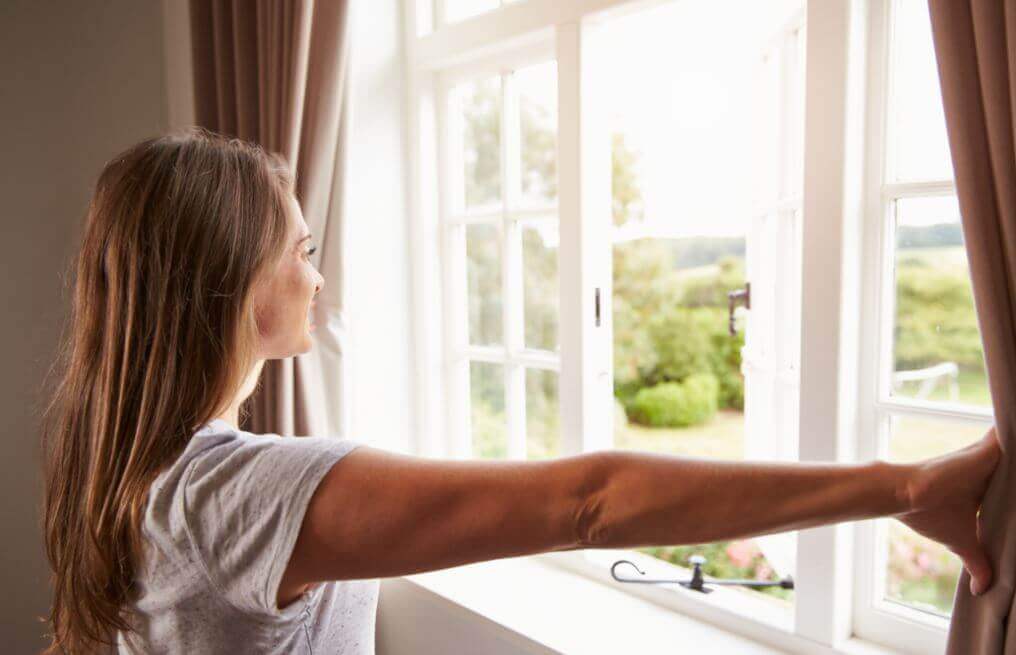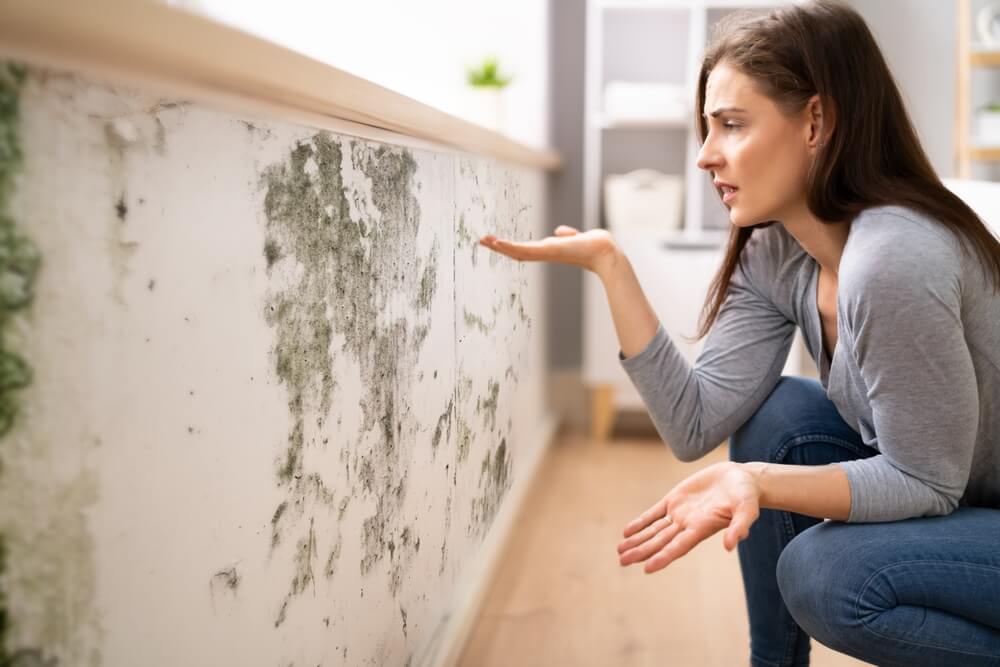Five Tips For Getting Rid of Moisture in Your Home

Getting rid of moisture in the home is something we should all do, both for aesthetic and health reasons. Indeed, dampness can trigger outbreaks of certain allergies.
Furthermore, there’s nothing more discouraging than damp patches on your walls. In fact, excess moisture is a real problem for many homes, especially those located in areas where climatic conditions make them more prone to its effects.
Fortunately, there are some simple tricks to remove moisture in the home. We’re going to talk about five of them.
What do high levels of moisture mean?
A high level of moisture doesn’t only affect people who suffer from nasal congestion and other ailments, but also pets and even our property. For example, books, wooden furniture, and clothing, among other objects, deteriorate due to this problem.
However, how much moisture is considered to be excessive? According to a report from the Center for Disease Control and Prevention in the United States, an indoor humidity percentage that exceeds 60 percent is considered high.
On the other hand, the survival of airborne viruses is minimized in environments between 40 and 60 percent humidity. Similarly, mites and fungi are reduced when it’s below 50 percent.
The consequences of not getting rid of moisture in the home
Moisture in the home can cause different problems. Here are some of them:
- Mites.
- Bad smell.
- Bacteria and fungi.
- Mold on walls and in corners.
- Deterioration of the property and objects in it.
In addition to creating a bad visual impression, excess moisture poses a health problem. Those who suffer most are people with allergies and those who suffer from respiratory diseases.
You might also like to read: How to Detect Excessive Moisture in Your Home
Tips for getting rid of moisture

1. Ventilation
This is the most important recommendation of all. You should always maintain proper ventilation in your home, especially in areas where you’re most likely to have moisture problems.
Air conditioning can help keep areas of your home where there’s hardly any natural air free of moisture. However, don’t overdo it. The air you breathe must have some moisture to prevent respiratory diseases, according to a report by the European Lung Foundation.
You might be interested to read: 6 Effects of Air Conditioning On Your Health
2. Recognize moisture sources
If you find an area in your home with high moisture levels, you should try finding out what’s causing it and eliminate the problem. You might be able to fix it yourself or, alternatively, you may need to call a plumber.
As a rule, when there are broken pipes or water leaks that aren’t visible, it’s reflected on the walls, which will gradually begin to stain.
You should bear in mind that, if you don’t solve these leaks immediately, you’ll not only have a problem removing the moisture, but the situation could worsen and cause flooding.

3. Use a dehumidifier
This appliance is perfect for getting rid of moisture, especially in rainy or cold regions. Moisture tends to build up easily in these areas because there’s less of a chance of permanently ventilating houses.
Therefore, if you have a problem with moisture, you can use this appliance to absorb and drain it easily.
4. Get rid of moisture with salt
Salt is an element with really high capacities of absorption. In addition to being useful for removing moisture at home, you can also use it to remove stains on clothing.
To make the moisture-removing solution, you’ll need a flat container and a kilo of coarse salt. Simply place the salt in the container, in a corner or hallway. After a day or two, it’ll have absorbed a great deal of moisture.
The moment you notice that the salt is really wet or if it’s turned black, you must renew it.
You might be interested in: How to Use Salt to Clean Your Home
5. Other tips to prevent moisture in the home
Apart from the aforementioned recommendations for removing moisture, preventing it from entering or forming in your home is also really important. Just follow these simple tips:
- When cooking, turn on the extractor fan.
- Never crank up the heating above 20 degrees since it contributes to moisture forming on the walls and other areas.
- Dry your clothes by hanging them outside. If you leave them inside, their moisture will spread throughout the room.
- Don’t have too many plants in the same area. It may cause condensation to form, a vapor that comes from certain of their elements.
- Bathrooms are places where moisture accumulates. Dry the floor well after showering and, if necessary, install an extractor fan.
Finally, remember that you must also take into account aspects such as natural lighting and air circulation in your home. Windows and doors should be placed in a way that encourages the entry of sunlight. You might also like to think about moving the furniture to allow air to circulate in your house.
All cited sources were thoroughly reviewed by our team to ensure their quality, reliability, currency, and validity. The bibliography of this article was considered reliable and of academic or scientific accuracy.
- Centros para el Control y Prevención de Enfermedades de los Estados Unidos. (2024.). Moho. Consultado el 30 de noviembre de 2024. https://www.cdc.gov/mold-health/about/index.html
- Albelda-Estellés Ness, MC. (2023). Indoor relative humidity: relevance for health, comfort, and choice of ventilation system. Universitat Politècnica de València, 218-228. https://ocs.editorial.upv.es/index.php/VIBRArch/VIBRArch2022/paper/view/15237
This text is provided for informational purposes only and does not replace consultation with a professional. If in doubt, consult your specialist.








